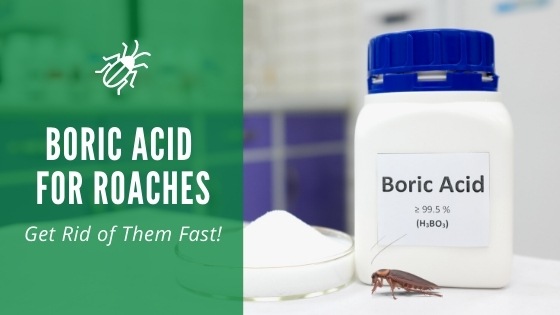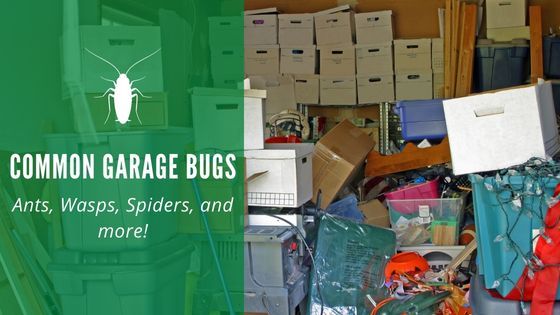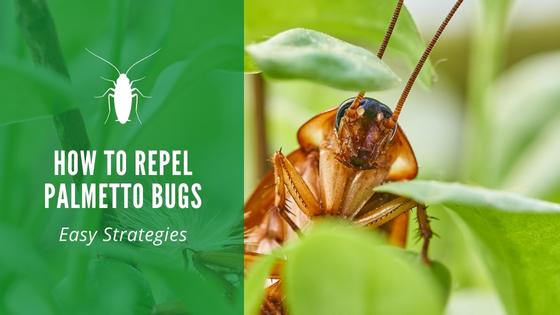Boric Acid for Roaches

Many different types of pesticides can be used to get rid of unwanted insects or rodents in the home. If you have a problem with roaches, you want to choose a safe product in your home, but you still want it to be effective. Boric acid has been used as a pesticide product for decades, and it’s a lot safer than many of the chemicals you’ll find for getting rid of pests.
What is Boric Acid?
A byproduct of boron trihalides and diborane, boric acid dissolves easily in water, and it has no odor. It is completely colorless, it comes in powder form, and you’ll often see it in household cleaning products. It can also be used as a natural pesticide product.
How Does Boric Acid Kill Roaches?
Made from both boron and water, boric acid occurs naturally in the soil. When you purchase boric acid from the store, you will directly apply it to areas you think the roaches are passing through. As they move through the boric acid, it will transfer to their body. When they later clean themselves, they will ingest the product into their bodies. It will poison them internally.
Roaches tend to feed off their own colony’s bodies when one of them has died, and eating the poisoned roaches will poison the next batch of roaches. Boric acid can also shut down the roaches’ nervous system, which would also result in death. When used correctly, you can quickly kill off an entire roach problem in your home.
How to Use Boric Acid for Roaches
The best time to apply boric acid would be in the late evening hours. Roaches usually come out at night when you’ve turned off all the lights and have gone to bed. Make sure it’s applied liberally to areas like under your kitchen and bathroom sinks, countertops, and the floor along baseboards. It’s key that you don’t use so much that you’re creating piles of boric acid around the home. Roaches tend to be lazy and won’t go through the trouble of climbing through a large pile of material. Use extreme caution when applying the boric acid.
You don’t want to inhale it, and you don’t want it to come into contact with anything in your home that you consume or use on your body. Keep it away from food, your dishes, utensils, and where you keep your toothbrush.
How Long Does it Take Boric Acid to Kill Roaches?
Once you’ve successfully put down your boric acid in the home, you’ll need to wait for the roaches to come into contact with it. The boric acid won’t necessarily repel them, so putting it in numerous locations will ensure that the roaches encounter it.
Once they’ve got it on their body, it will take approximately 72 hours before they will die. Smaller or younger roaches may take less time to perish. Boric acid causes stomach poisoning, so you have to wait for the product to make its way through their digestive system.
While it may seem like this is too long, this provides time for the roaches to take the boric acid back to their home, where other roaches will also ingest the product. You can essentially get rid of a large group of roaches in just about a week or so, but it may take longer if you have a large infestation throughout a larger area.
Diatomaceous Earth vs. Boric Acid for Cockroaches
Diatomaceous earth is naturally occurring, and it is composed of very abrasive material. You can safely use diatomaceous earth inside the home, and it’s preferably used here because of its inability to come into contact with a lot of moisture.
Diatomaceous earth is used in the same manner when in powder form. It is sprinkled in areas where the roaches will pass through it. Because of its abrasive nature, it will cut the outside of their bodies. If they consume it, it will cause internal bleeding. While it can be effective, it’s still more useful to stick with boric acid to kill roaches. You can guarantee that the roaches will die when they come into contact because it’s very deadly when ingested.
While boric acid is safe to use around humans and in the home, you should still use caution when using it for a roach problem. It’s still a caustic chemical that can de dangerous if handled incorrectly. Make sure it’s out of reach of children and pets that may be in the home.



